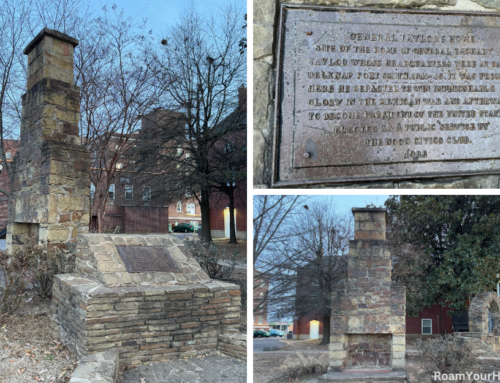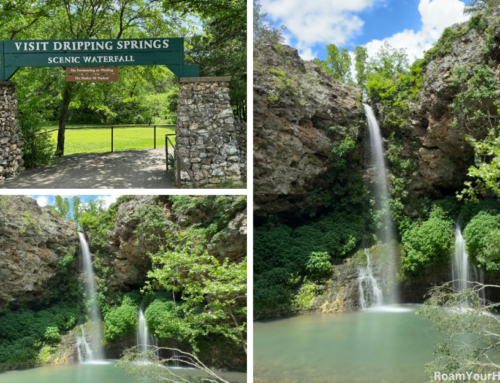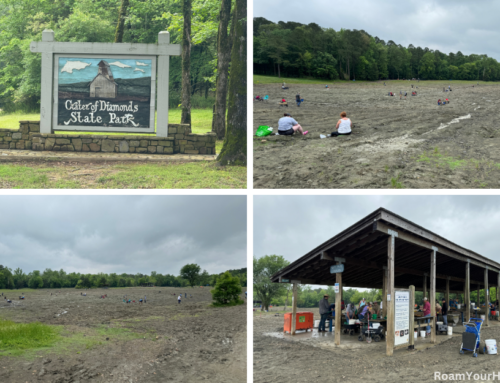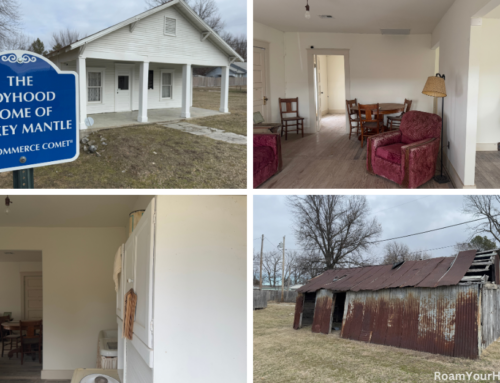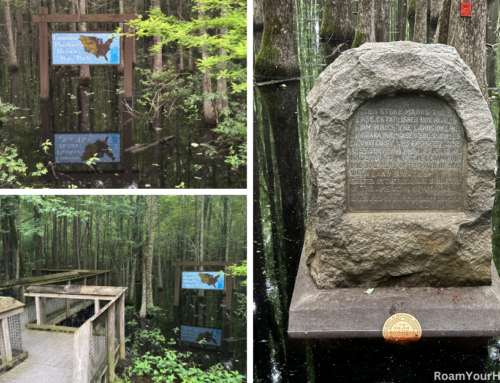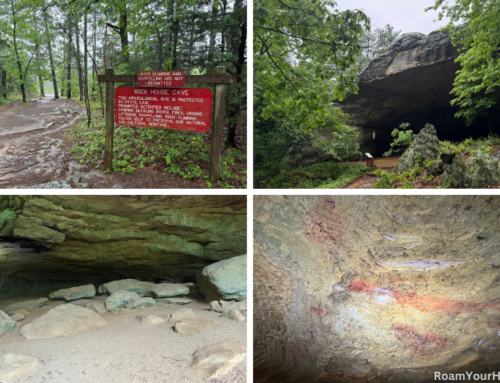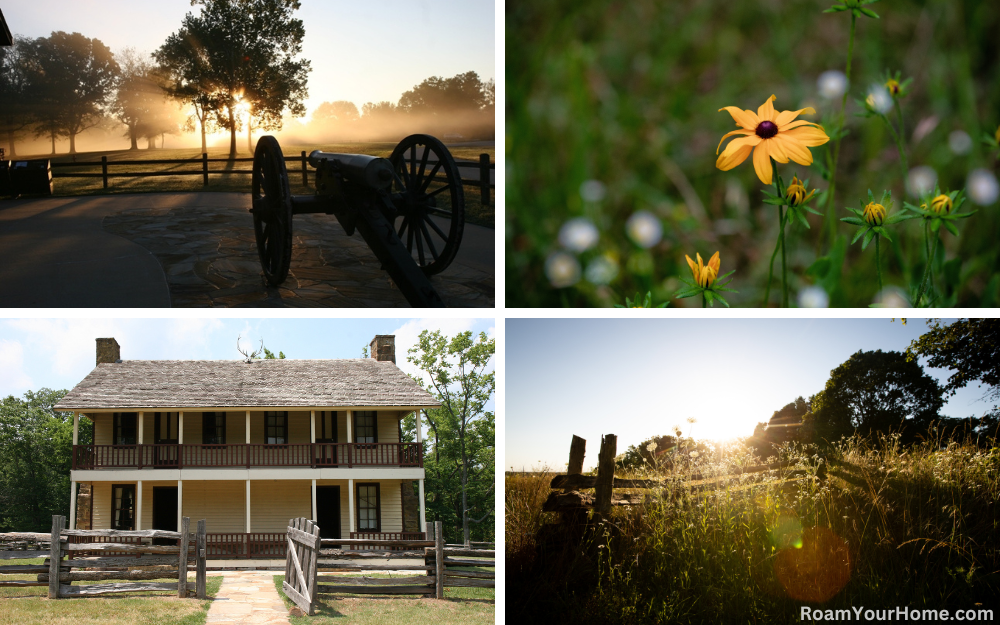
Explore Pea Ridge National Military Park, a Civil War Battlefield
Pea Ridge National Military Park is located near the Missouri border in northwest Arkansas. The park protects, preserves, and interprets the Battle of Pea Ridge during the Civil War.
The Battle of Pea Ridge
The Battle of Pea Ridge was fought on March 7 and 8, 1862. The battle is viewed by historians as one of the most, if not the most, pivotal battles in the Trans-Mississippi Theater of the Civil War. Missouri was considered a crucial state for both the North and South. Controlling Missouri was the key to winning the war in the West. Military strategists on both sides were aware of this. The state provided an easy invasion route either north or south. Who controlled Missouri would also ultimately control the Mississippi, Missouri, and Ohio Rivers. It also had plentiful natural resources, most notably lead and iron ore. The state also housed the St. Louis Arsenal and its stockpile of over 60,000 muskets.
During the first year of the Civil War, keeping Missouri in the Union was a vital objective of the federal government. The state was claimed by both the Union and Confederacy. In fact, it had two governments and sent representatives to Washington, D.C., and the Confederate Capitol of Richmond, Virginia.
The Battle Begins
Over those two days in March 1862, more than 26,000 soldiers fought here. Brigadier General Samuel R. Curtis commanded the Union’s 10,500 men. Major General Earl Van Dorn, a nephew of President Andrew Jackson, led the Confederates’ 16,500 men. This was one of the few battles in the war where the South outnumbered the North.
On March 6, General Curtis, realizing he is outnumbered, orders his Army to dig in on the bluffs above Little Sugar Creek. Curtis expected the rebels to attack from the South. Seeing the entrenched federal position, Confederate General Van Dorn knew a head-on attack would be suicide. Van Dorn decides to march his Army in the cover of night to a place behind the federal lines. He hopes to surprise the Federals and score a quick victory. For this to work, speed was of the essence. Van Dorn left his wagons behind, including reserve ammunition. By circling around, Van Dorn cut himself off from being resupplied. The cold night and long march pushed his already weary Army to exhaustion. During the morning of March 7, part of the Confederate Army commanded by famed Texas Ranger Brigadier General Benjamin McCulloch is still miles away from the planned point of attack at the Elkhorn Tavern at dawn. Van Dorn ordered McCulloch to take a different road to meet with the rest of the Army.
Surprise attack fails
By this point, Curtis has realized the Van Dorns Army was behind him and ordered an about-face of his forces. Van Dorn’s divided Army would not surprise his enemy but face them head-on. Meanwhile, McCulloch’s troops to his right were embroiled in fierce fighting. That would lead to the death of General McCulloch. His death immediately demoralized his troops, and to make the bad situation worse, McCulloch’s successor, General James McIntosh, was also killed, and Colonel Louis Hebert was captured. On the eastern front, Van Dorn’s decision to march his troops without sleep and leave his ammunition proved costly. His Army was worn out and nearly out of ammo.
General Van Dorn would later write the Battle of Pea Ridge “I attempted first to beat the enemy at Elkhorn, but a series of accidents entirely unforeseen and not under my control and a badly-disciplined army defeated my intentions. The death of McCulloch and Mcintosh and the capture of Hebert left me without an officer to command the right wing, which was thrown into utter confusion, and the strong position of the enemy on the second day left me no alternative but to retire from the contest.”
Despite being outnumbered, the battle ended in a Union victory. It was not only a deciding factor that helped keep Missouri in the Union. The battle was a turning point in the war in the West.
Pea Ridge National Military Park is considered one of the best-preserved battlefields of the Civil War. Visitors arriving at the park today see the same views as the armies while touring the battlefield.
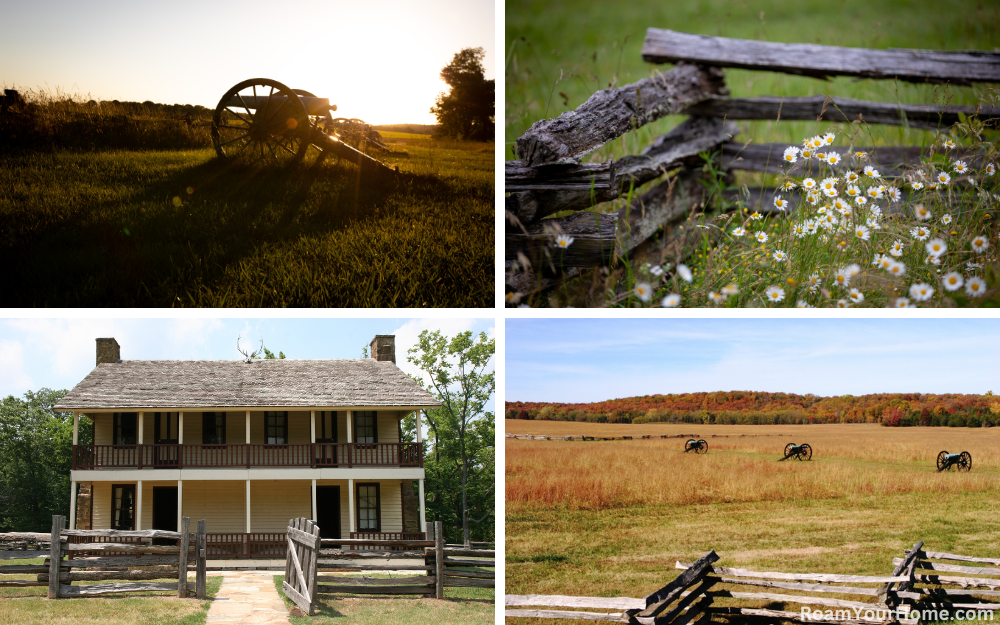
Driving Tour of Pea Ridge National Military Park
There is an 11-stop tour that loops through the battlefield, providing visitors with a sense of the battle and additional history for the area. The first place you should stop is at the park visitor center. There is a great video and a small museum to check out.
Hike along an original section of the Trail of Tears.
The first stop on the tour is the remains of an original section of the Trail of Tears. The shallow depressions along Telegraph Road were traveled by thousands of Cherokee and other Native Americans during their forced removal from their homelands in the winter of 1838-39. This was a part of the Northern Route and can be walked by visitors today. Both armies also used Telegraph Road during the Pea Ridge campaign. The next stop is General Curtis’s Headquarters. It was here where Curtis planned the strategies of his Army. The third stop is Leestown. While there is nothing left o the town now, during the battle, wounded from both sides were treated in the town. Up next is the Leetown Battlefield. This is where General Ben McCulloch and James McIntosh were killed near the northern boundaries of the field.
Native Americans at Pea Ridge
The next stop tells of the Cherokee involvement in the war. Pea Ridge is the only major Civil War battle in which Indian troops participated. Two regiments of about 1,000 Cherokee fought for the Confederacy.
The following two stops are the West and East Overlooks. Both have wayside exhibits. The historic Elkhorn Tavern is the next stop. This building was here before the war came to Arkansas and has stood the test of time since.
Stop nine shows what happens on the evening of March 7, when the Confederates charged across the field only to be pushed back. The guns in the area mark the battle lines of the following morning.
Stop ten is the federal line. Signs explain how artillery deployed here forced the Confederates to withdraw. The last top is a chance to see part of the Civil War frozen in time. The Little Sugar Creek Trenches are still visible. They have eroded over the years but can still be made out more than 160 years later.
If you have time to explore the park, we recommend biking the park road. It’s a fantastic way to really appreciate just how little has changed since the battle was fought. For those looking to stretch their legs, The roughly 2-mile Williams Hollow Trail loop is a popular hiking trail and a great way to get off the beaten path.

